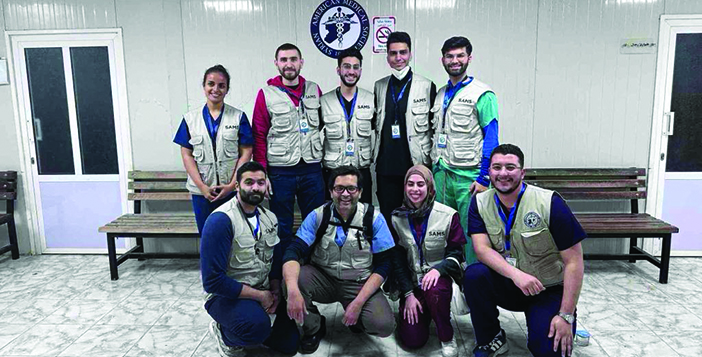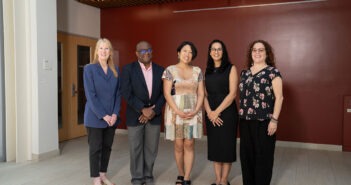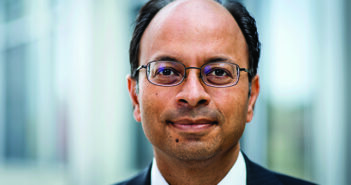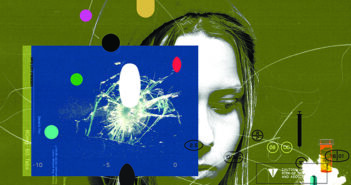Brown University volunteers reflect on their medical mission at a Syrian refugee camp.
Since the Syrian civil war began in 2011, more than 6.5 million refugees have fled Syria. Thirteen million have been internally displaced.
Earlier this year, the Syrian American Medical Society, an NGO, carried out its largest medical mission in Jordan yet with more than 100 volunteers, including medical students, residents, physicians, surgeons, and dentists from across the world. A group of us from Brown—the chair of dermatology, a medical student, and an undergraduate student—joined this weeklong mission at a refugee camp.
We had volunteer medical students from across Jordan helping with triage, physical exams, and interpretation. Physicians and medical students gave presentations to the medical students in Jordan about health care in the US and expanding their clinical repertoire.
CHRONIC DISPLACEMENT, CHRONIC DISEASE
Khadijah (not her real name) appeared very sad that afternoon as she came into the Syrian American Medical Society’s clinic in the United Nations High Commissioner for Refugees-managed Zaatari Refugee Camp. She asked to see the visiting dermatology team because of profound hair loss and dizziness over the last year. Accompanying her were five of her seven children, all under the age of 10. After a quick evaluation, it became apparent that Khadijah had profound iron-deficiency anemia. Without access to blood testing, we relied on a history and physical exam, noting dry, powdery scale on her scalp and pale lower eyelid conjunctiva—likely due to a poor diet and several consecutive pregnancies.
Every international medical mission is a unique experience, probably the best part of which is working with physicians, dentists, nurses, medical students, and volunteers all like-minded in their goal: to give of themselves; to care for fellow human beings living in makeshift conditions, displaced for the short- or long-term. Lack of access to shelter, food, clean drinking water, and health care leads to chronic health problems, in large part stemming from chronic malnutrition.
The January mission to Jordan was overwhelming in ways we could not have predicted. We saw malnutrition-related skin problems, hair loss, fragile gums and tooth decay, histories of fractures, and frequent blistering and skin infections. We saw stunted growth among children and weight loss due to a lack of adequate food and macronutrients, especially among women of childbearing age. Khadijah’s hair loss and dizziness, for example, were due to iron deficiency. We also saw problems related to lack of vitamin C and D. Chronic displacement and malnutrition are inextricably linked. For Khadijah and her family, the solutions, albeit seemingly simple, have complex underpinnings to the long-term health and prosperity of large segments of displaced populations in the world. —ABRAR QURESHI
A LESSON IN COMPASSION
It was different this time. The last time I was on a medical mission trip as an Arabic interpreter was as a 16-year-old high school student in 2016, interpreting between physicians and Syrian refugees in Greece. That experience sparked my passion for medicine. Eight years later, now a second-year medical student, I was in Jordan interpreting for Syrian refugees, but this time I was with a mentor.
“What do you think all these random red bumps are from?” Dr. Qureshi asked me as we examined a baby and her mother.
“I’m not sure, maybe scabies?” I replied.
“Don’t mention scabies,” he cautioned.
At first, I didn’t understand why he said that. Scabies was the right diagnosis, and the family likely knew what was happening. But then I realized he meant that we needed to share such news privately.
We closed the curtain.
“You have jarab,” I told the mother, using the Arabic word for scabies. Her face filled with shame. She knew what her baby had and she knew that she needed medicine. She still presented to our clinic looking for those who would listen.
We asked her permission to examine her arms, and found red bumps there, too. We wrote her and her family the prescription, answered all her questions on how to use it, reassured her that this was entirely out of her control, and sent her and her baby on their way.
That day, I learned from Dr. Qureshi how to deliver a difficult diagnosis with empathy. In addition to giving the patients privacy, we spoke to the mother in a softer voice so others who were around—others she might later see around the camp—would not hear. It was a course in compassion—a practice that I hope to carry in my future as a physician. —SAMER WAHOOD
IMPROVING CARE DELIVERY
“Where are you from, Mahmoud?” I asked the boy, expecting his reply to be the typical Damascus or Aleppo. This time I got, “Here.”
We were in Zaatari Refugee Camp, a 2-square-mile village with roughly 80,000 refugees. It hit me hard: this is the only home that this 9-year-old has known. The limitations in the camp are extreme: rations on food and water, schools not having proper supplies, and unstable homes built from billboards and metal scraps. To grow up in this environment and think this is normal is beyond comprehension.
With each patient, it is important to give proper care. We can see the happiness in the patients after we tell them “Everything is OK” or “You look great.” However, the way the care is given right now is inefficient. There are plenty of barriers that prevent a physician from seeing more patients, such as the note-taking system, drug prescription method, and so on. By further developing technologies that properly facilitate physicians seeing patients, we can improve the efficiency and effectiveness of health care delivery in these camps.
But it’s not just about the medication a doctor gives; it’s about visiting, talking to, laughing with, and reassuring patients. That’s the truly life-changing care that everyone deserves. I remember giving Mahmoud a bag of lollipops and colored pencils. As he left the room, he was beaming from ear to ear with happiness. It was a small gesture, but it meant the world to him. —DAANISH QURESHI
THE FUTURE OF REFUGEE CARE
Our team from Brown left this mission with hope for medicine. Much work is left to remedy the situation of the Syrian refugees and the local underserved population in Jordan. This trip allowed us to see diseases and the burden of diseases unlike those in the US.
Since returning, our team has been working on data-driven solutions for displaced people. Better data collection at clinical sites, micronutrient grants, and providing care to the underserved can help us address the problem of chronic disease in chronically displaced populations.
With capacity-building efforts and permanent housing for displaced people, there can be a path to normalcy in their lives—and we’ll all be better for it.
Wahood thanks the Office of Student Affairs of The Warren Alpert Medical School for travel support to present at the Syrian American Medical Society conference in Amman, Jordan, and to serve on this trip.




